The Catalyst Killing - [26]
Once inside, my greatest problem was finding anything of any relevance in the flat. All my hopes were initially thwarted. Marie Morgenstierne had apparently been a tidy tenant, and there was not much of a personal touch in the flat. There were a couple of rather traditional paintings on the walls and three framed photographs of her and Falko, including an engagement picture, on the chest of drawers. Otherwise it seemed to be an entirely functional flat. Everything one expected to find in a single woman’s flat was neatly in place here – and nothing more.
Marie Morgenstierne had a bookshelf full of textbooks on politics and other political literature, including a series of selected works by Marx and Engels. And she had a respectable number of literary works on another bookshelf. She had a fair amount of clothes in the wardrobe in the bedroom, but less make-up in the bathroom than one might expect to find for a young woman of her age. There was no form of contraception anywhere, nor any other indication that she had a new boyfriend or lover in her life. Nor were there any personal letters or diaries that might cast light on the case. In short, there was absolutely nothing to point me in the direction of who it might have been who had shot the woman who lived here two days ago.
I found only one thing of any interest in the late Marie Morgenstierne’s flat. And although it was very interesting indeed, it was hard to gauge how important it was.
Under the pillow on Marie Morgenstierne’s bed was a small white envelope that had been both franked and postmarked. Her name and address were typed on the front. There was no sender’s name or address on the back.
My first thought was that it was perhaps a love letter from a new lover or admirer. However, what was written on the piece of paper inside the envelope was again typed, and was short and to the point:
‘Was it you who betrayed Falko? If so, the time has come to confess your sins and tell the truth before 1 August, or else…’
The sheet of paper was small and white, and could have been bought in any bookshop. And the typeface was the most usual kind. I did not believe for a moment that the sender had left any fingerprints on the paper, or that there was anything more to be gained from it.
I stood in the late Marie Morgenstierne’s bedroom with the letter in my hand and pondered whose hands had danced over the keys when the letter was written. Marie Morgenstierne had been sent a warning not many days before she died. The letter was not dated, but the postmark said 20 July 1970.
Rightfully or not, someone had this summer not only accused Marie Morgenstierne of high treason, but had also issued a threat and given her a deadline, which it would appear had not been met.
To me, the letter was at last evidence of a connection between her death and Falko Reinhardt’s disappearance. The problem was that we faced what Patricia had called the curse of public space. In theory, more or less anyone could have written and sent the letter. In practice, I watched the faces of Trond Ibsen, Kristine Larsen, Anders Pettersen, Arno Reinhardt and Astrid Reinhardt flash through my mind in quick succession.
II
The caretaker was still waiting outside the door in anticipation, but could not be of much help. He had heard about the tenant’s extreme political views from a cousin who was in the union, but had not seen evidence of them himself. She had been an exemplary tenant and, to his knowledge, had observed all the house rules. As far as guests were concerned, the caretaker apologized that it was not always easy for him and his wife to know all the comings and goings, as tenants had their own front door keys and could in practice let anyone in as long as they were quiet. Falko Reinhardt’s face was familiar to him from the newspapers, and both the caretaker and his wife had seen him there several times before he disappeared. The only other guest they had seen in the past couple of years was a long-legged, young blonde woman whom he might say was rather attractive. I nodded and noted that, reasonably enough, Kristine Larsen had been here.
The caretaker could not remember having seen any other friends. To my relief, he looked slightly bewildered when I asked him if he had at any point seen a young woman who read books as she walked.
There was one thing of interest that the caretaker could tell me about the deceased tenant. And it was of great potential interest. On several occasions that spring, both he and his wife had thought they heard unknown footsteps on the stairs that stopped on the first floor, and Marie Morgenstierne’s flat was the only one on that floor that was inhabited. They had both, a couple of times, caught a glimpse of someone they thought was the visitor as he left the building. If it was he, the guest was taller than average, but they could not say much more as he had left in the dark and was wearing a hat and coat. The caretaker was fairly sure that he or his wife, or both of them, had heard the footsteps on three or four occasions – the last time being only a week or so ago.
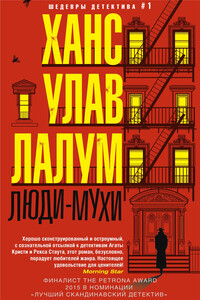
Убит бывший лидер норвежского Сопротивления и бывший член кабинета министров Харальд Олесен. Его тело обнаружено в запертой квартире, следов взлома нет, орудие убийства отсутствует. На звук выстрела к двери Олесена сбежались все соседи, но никого не увидели. Инспектор уголовного розыска Колбьёрн Кристиансен считает, что убийство, скорее всего, совершил кто-то из них. Более того, он полагает, что их показания лживы.
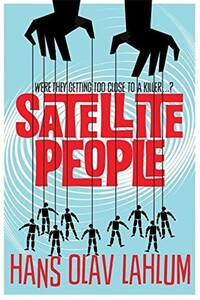
A gripping, evocative, and ingenious mystery which pays homage to Agatha Christie, Satellite People is the second Norwegian mystery in Hans Olav Lahlum's series. Oslo, 1969: When a wealthy man collapses and dies during a dinner party, Norwegian Police Inspector Kolbjorn Kristiansen, known as K2, is left shaken. For the victim, Magdalon Schelderup, a multimillionaire businessman and former resistance fighter, had contacted him only the day before, fearing for his life. It soon becomes clear that every one of Schelderup's 10 dinner guests is a suspect in the case.
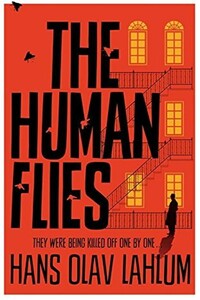
Oslo, 1968: ambitious young detective Inspector Kolbjorn Kristiansen is called to an apartment block, where a man has been found murdered. The victim, Harald Olesen, was a legendary hero of the Resistance during the Nazi occupation, and at first it is difficult to imagine who could have wanted him dead. But as Detective Inspector Kolbjorn Kristiansen (known as K2) begins to investigate, it seems clear that the murderer could only be one of Olesen's fellow tenants in the building. Soon, with the help of Patricia – a brilliant young woman confined to a wheelchair following a terrible accident – K2 will begin to untangle the web of lies surrounding Olesen's neighbors; each of whom, it seems, had their own reasons for wanting Olesen dead.
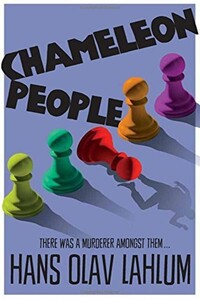
From the international bestselling author, Hans Olav Lahlum, comes Chameleon People, the fourth murder mystery in the K2 and Patricia series.1972. On a cold March morning the weekend peace is broken when a frantic young cyclist rings on Inspector Kolbjorn 'K2' Kristiansen's doorbell, desperate to speak to the detective.Compelled to help, K2 lets the boy inside, only to discover that he is being pursued by K2's colleagues in the Oslo police. A bloody knife is quickly found in the young man's pocket: a knife that matches the stab wounds of a politician murdered just a few streets away.The evidence seems clear-cut, and the arrest couldn't be easier.
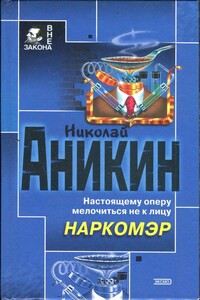
Тупик. Стена. Старый кирпич, обрывки паутины. А присмотреться — вроде следы вокруг. Может, отхожее место здесь, в глухом углу? Так нет, все чисто. Кто же сюда наведывается и зачем? И что охраняет тут охрана? Да вот эту стену и охраняет. Она, как выяснилось, с секретом: время от времени отъезжает в сторону. За ней цех. А в цеху производят под видом лекарства дурь. Полковник Кожемякин все это выведал. Но надо проникнуть внутрь и схватить за руку отравителей, наживающихся на здоровье собственного народа. А это будет потруднее…

«Посмотреть в послезавтра» – остросюжетный роман-триллер Надежды Молчадской, главная изюминка которого – атмосфера таинственности и нарастающая интрига.Девушка по имени Венера впадает в кому при загадочных обстоятельствах. Спецслужбы переправляют ее из закрытого городка Нигдельск в Москву в спецклинику, где известный ученый пытается понять, что явилось причиной ее состояния. Его исследования приводят к неожиданным результатам: он обнаруживает, что их связывает тайна из его прошлого.
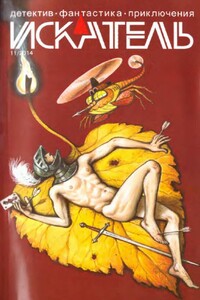
«ИСКАТЕЛЬ» — советский и российский литературный альманах. Издаётся с 1961 года. Публикует фантастические, приключенческие, детективные, военно-патриотические произведения, научно-популярные очерки и статьи. В 1961–1996 годах — литературное приложение к журналу «Вокруг света», с 1996 года — независимое издание.В 1961–1996 годах выходил шесть раз в год, в 1997–2002 годах — ежемесячно; с 2003 года выходит непериодически.Содержание:Анатолий Королев ПОЛИЦЕЙСКИЙ (повесть)Олег Быстров УКРАДИ МОЮ ЖИЗНЬ (окончание) (повесть)Владимир Лебедев ГОСТИ ИЗ НИОТКУДА.
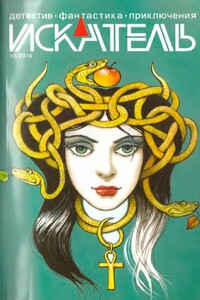
«ИСКАТЕЛЬ» — советский и российский литературный альманах. Издается с 1961 года. Публикует фантастические, приключенческие, детективные, военно-патриотические произведения, научно-популярные очерки и статьи. В 1961–1996 годах — литературное приложение к журналу «Вокруг света», с 1996 года — независимое издание.В 1961–1996 годах выходил шесть раз в год, в 1997–2002 годах — ежемесячно; с 2003 года выходит непериодически.Содержание:Олег Быстров УКРАДИ МОЮ ЖИЗНЬ (повесть);Петр Любестовский КЛЕТКА ДЛЯ НУТРИИ (повесть)
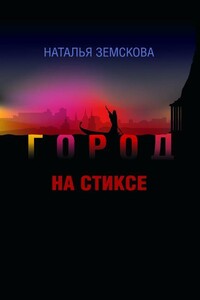
Наталья Земскова — журналист, театральный критик. В 2010 г. в издательстве «Астрель» (Санкт-Петербург) вышел её роман «Детородный возраст», который выдержал несколько переизданий. Остросюжетный роман «Город на Стиксе» — вторая книга писательницы. Молодая героиня, мечтает выйти замуж и уехать из забитого новостройками областного центра. Но вот у неё на глазах оживают тайны и легенды большого губернского города в центре России, судьбы талантливых людей, живущих рядом с нею. Роман «Город на Стиксе» — о выборе художника — провинция или столица? О том, чем рано или поздно приходится расплачиваться современному человеку, не верящему ни в Бога, ни в черта, а только в свой дар — за каждый неверный шаг.
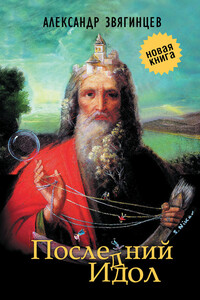
В сборник «Последний идол» вошли произведения Александра Звягинцева разных лет и разных жанров. Они объединены общей темой исторической памяти и личной ответственности человека в схватке со злом, которое порой предстает в самых неожиданных обличиях. Публикуются рассказы из циклов о делах следователей Багринцева и Северина, прокуроров Ольгина и Шип — уже известных читателям по сборнику Звягинцева «Кто-то из вас должен умереть!» (2012). Впервые увидит свет пьеса «Последний идол», а также цикл очерков писателя о событиях вокруг значительных фигур общественной и политической жизни России XIX–XX веков — от Петра Столыпина до Солженицына, от Александра Керенского до Льва Шейнина.